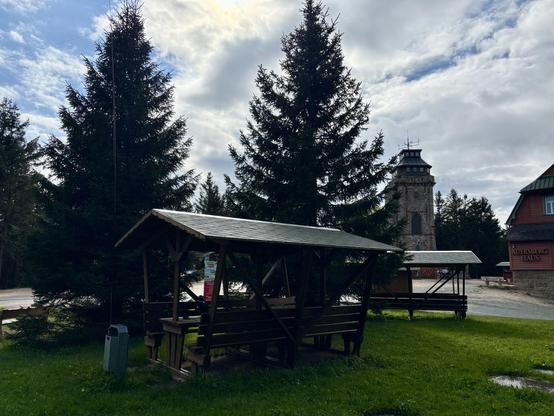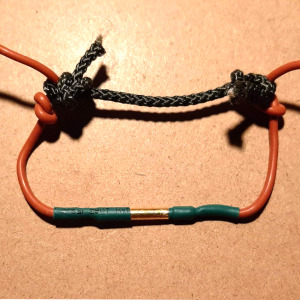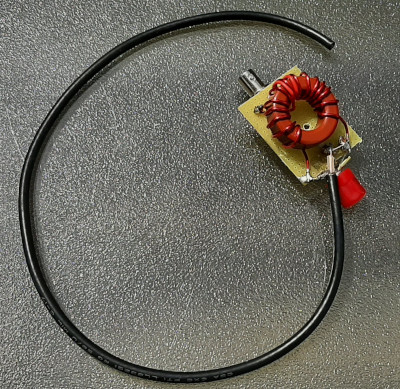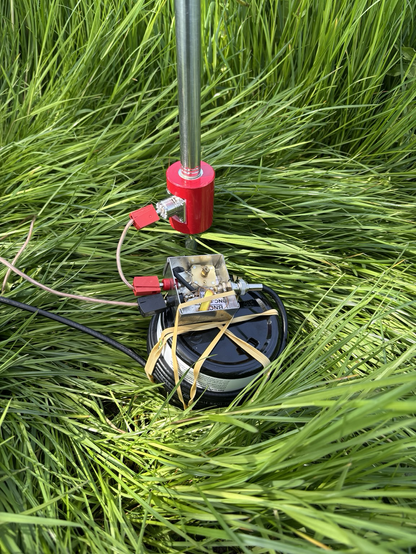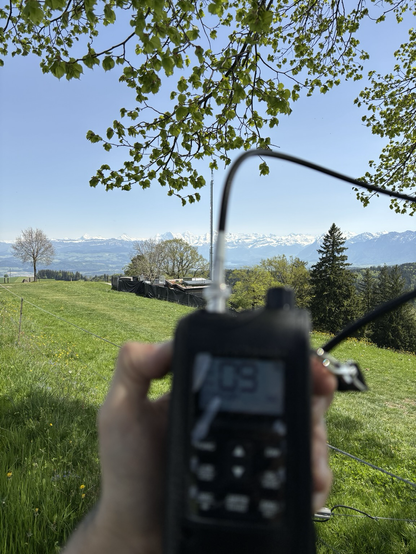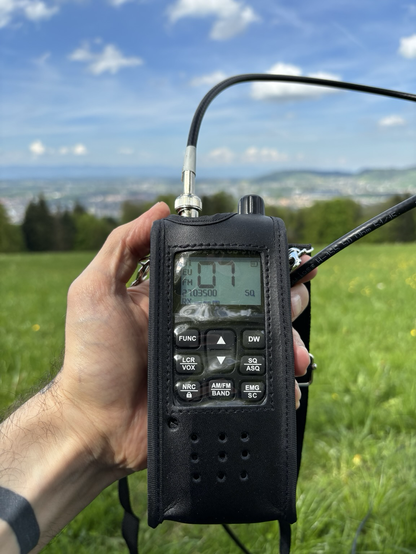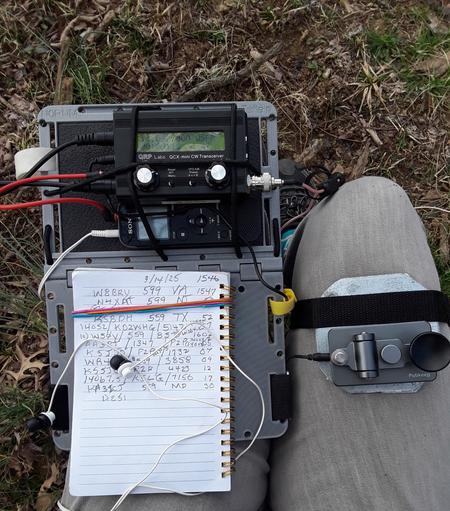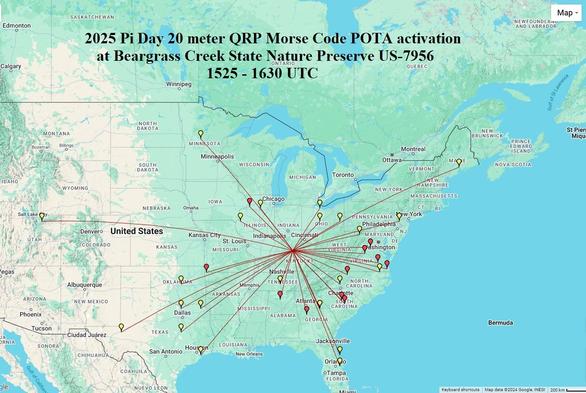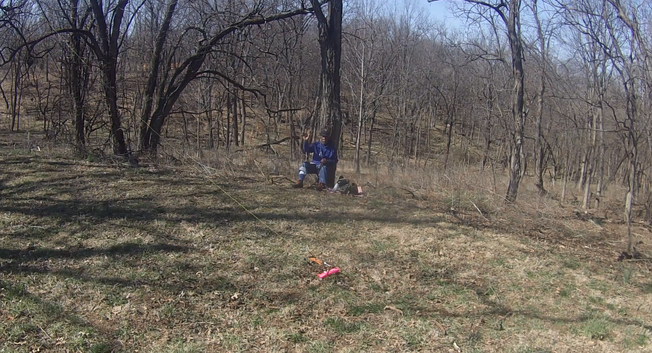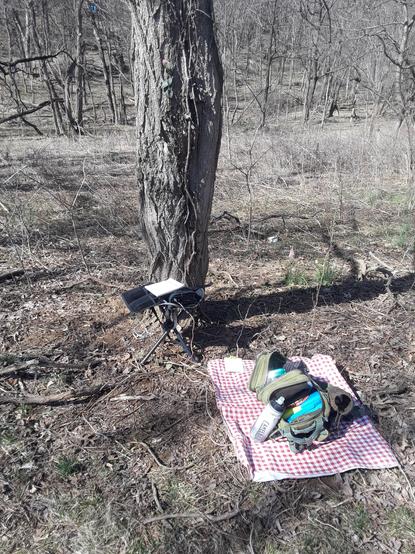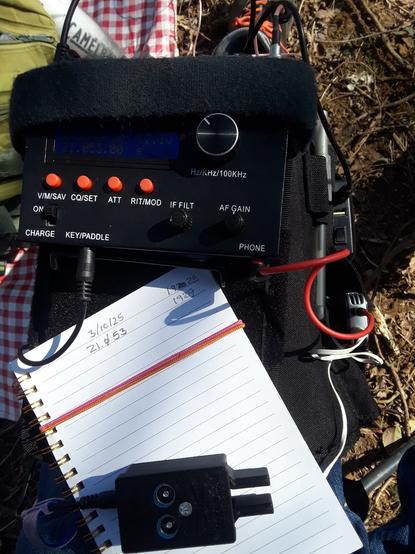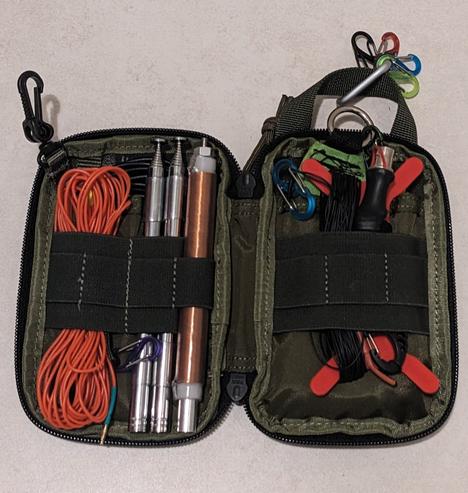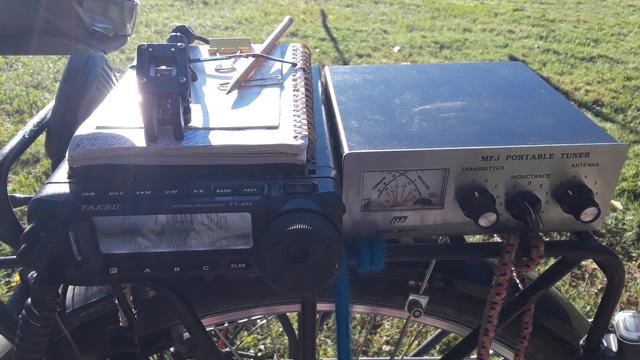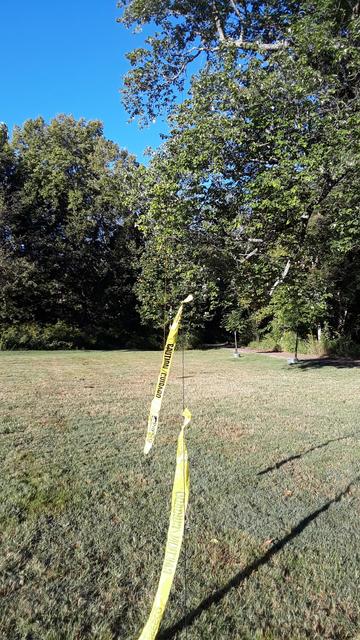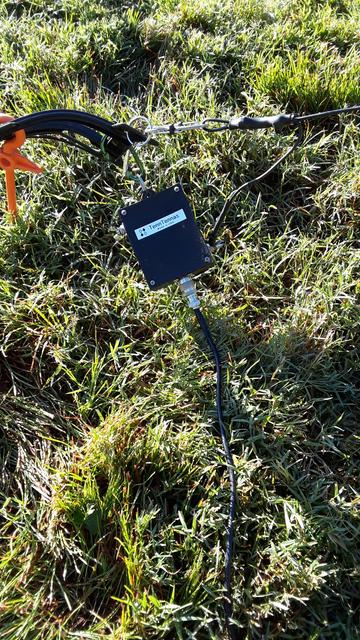Strange conditions this afternoon on #SOTA DM/SX-002 Auersberg (#WWFF DLFF-1106, #POTA DE-0040): just 5 QSOs on #20m with my #efhw despite calling for over 30 minutes. At least it's 10 SOTA points...
#HamRadio #SummitsOnTheAir #ParksOnTheAir #Amateurfunk #qrp #qcxmini #morsecode #hiking #mountains
#EFHW
Matching an EFHW antenna – a third way
There is no doubt about the popularity of the End-Fed Half-Wave antenna. It is used by a very large number of hams, especially during portable operations like POTA, SOTA, WWFF etc. Why is it so popular? The principal reason seems to be ease of deployment. The EFHW requires only a single support and can even be used without any kind of transmission line – i.e. it can be directly connected to a radio without any coax, so zero transmission line losses!
clipart-library.comBut despite those advantages the EFHW has its critics. There are two principle objections: first the commonly used 49:1 impedance transformer, or UNUN if you prefer, is claimed to be inefficient.
Secondly, the antenna wire is only a half wavelength long on its design band. Although it can be used on its even harmonics the antenna becomes multiple half-wavelengths long. Of course, we know that the impedance of the wire is theoretically replicated every half-wavelength so that shouldn’t be a problem.
It is even possible to get a 1:1 SWR match on other bands by pressing “the magic (Tune) button”. That doesn’t make the antenna any better but it does convince the transceiver that it shouldn’t roll back the power, or even worse, throw an exothermic hissy fit.
The disadvantage of using an EFHW as a broadband antenna is that the radiation pattern may change with each band. It may even break up into multiple lobes, making getting contacts a hit-and-miss affair.
If you are standing on the top of a wind swept mountain with a storm approaching and you need to get your 4 contacts to qualify a SOTA activation, you may not be entirely engrossed in the finer points of antenna physics. I have been an EFHW user for many years and have thousands of QSOs in the log. For a long time I was blissfully unaware of what a terrible antenna I was using while I battled countless pile-ups and enjoyed the thrill of operating my radio out in the Big Blue Sky Shack.
Those were the days my friend
As I read more and more about the theory of the End-Fed Half-Wave antenna I would deploy mine and agonize about efficiency and radiation patterns while reminiscing about the days when ignorance was bliss and I just enjoyed my hobby.
Keep It Sweet and Simple – Use a dipole
Critics often argue that a simple dipole is a good replacement for the EFHW. After all, both antennas are a half wavelength long; the main difference is where they are fed. A center fed dipole has a nominal impedance of 70 ohms, not 50 ohms, so still not perfect. It is usually erected as a “flat-top” which requires three supports. No problem in a quiet corner of the forest where nature benevolently provides ample leafy poles, but in a public park where zealous guardians of arboreal sanctuary patrol the greenwoods you may indeed have a problem.
A dipole can be erected in other ways, for example as a sloper. Now only one support is required but another tiny problemette arises – the feedline has to be kept at 90 degrees to the radiating wire. In either deployment fashion a long feedline is required. Let’s say we are operating a flat-top dipole on 20m. The antenna should be a half wavelength above ground so we need three 33ft/10m supports and 33ft/10m of coax feedline. The center support pole could be omitted but the weight of 33ft of coax plus a 1:1 UNUN at the feedpoint will drag the feedpoint down.
The long and winding (coaxial) road
Unless the operator is sitting right beneath the feedpoint, even more coax is needed to reach the radio. Two issues here, the coax will incur some loss although it is often too small to be significant. Secondly, the SWR will be changed by the coax loss – perhaps for the better, but it may create the illusion of a better SWR than is actually occurring up on the antenna wire.
Don’t leave home without it
You could connect the dipole feedpoint directly to the radio and operate the antenna in a “V” orientation. I did do exactly that during an emergency (I had inadvertently left my antenna at home) and successfully completed a POTA activation using a spare piece of wire. It must be realized that the feedpoint in such an arrangement is a high current point, and hence a point of maximum power radiation. Some of the radiated energy will be cooking the earthworms – and the operator!
Linked 20m, 30m, 40m EFHW arrangementSo back to the “horribly inefficient, avoid-at-all-costs, snake oil” End-Fed Half-Wave antenna. How can we overcome the problems exaggerated by its naysayers? First, make it a single band at a time antenna. What do I mean by that? Use a separate wire for each band? There is a very simple way to do that. I designed and built a 3-band EFHW for 20m, 30m and 40m. I started with a half wavelength of wire on the 20m band but added a 2mm banana connector at the end. I then attached an extension wire to make the the antenna a half wavelength on the 30m band – again with a 2mm banana connector at the end. Then another extension for the 40m band. Each section of wire is attached with a short piece of thin cord to allow the links to be adjusted for each band.
And now for something completely different
Now for the biggest objection to the EFHW – the matching device. Ham Radio Outside the Box has already discussed two different matching devices, the 49:1 impedance transformer and the L-network. Now we have a third competitor in the race to perfection – the tuned tank circuit. I have to credit two sources for the inspiration to try this method: Steve AA5TB and John M0UKD. Both these gentlemen have built what is essentially a parallel tuned circuit to match the very high impedance at the feedpoint of an End-Fed Half-Wave wire to the 50 ohms expected by a transceiver.
EFHW parallel tuned circuit matching deviceBeing an avid experimenter by nature I had to build one myself to see if it would work. I get the most enjoyment out of projects that go from adrenalin inspired enthusiasm to field trials in a half hour or less. As a result the finished product is often inelegant but hopefully functional. And so it was with this project. Having a collection of radio-junque accumulated over decades helps.
The picture shows a little project I threw together in a half hour to test whether AA5TB and M0UKD were promoting a good idea or snake oil. Both were using a variable capacitor to tune the tank circuit but, in my haste, I substituted a coax capacitor to make a matching device that would serve only a single band – I chose 20m.
**RED ALERT** **RED ALERT** **RED ALERT**
The parallel tuned circuit comprises, in addition to a variable capacitance (mine is variable by trimming its length with side cutters), the secondary winding of an impedance transformer. An impedance transformer? Isn’t that the weak link in the common 49:1 UNUN design employed by the unenlightened multitude?
I forged on regardless. A powdered iron toroidal core is used instead of the usual ferrite material. Why? To reduce the inductance to a level that can be resonated by the capacitor. As an experiment I tried winding 14 turns of magnet wire on a FT82-43 core but the inductance was way too high. The alternative is to use a powdered iron core and the only one I had in my junque box was a T200-2 so it would have to do. Another alternative is to wind an air core inductor. I soldered the coax capacitor in parallel with the secondary winding then wound two turns over the center of the secondary to create the primary winding.
Now, armed with my faithful side cutters I boldly went out onto my deck and hooked my new hastily built tank circuit matching unit to a piece of wire that I had previously established to be a true half wavelength on 20m. I attached a short coax between the matching device and my RigExpert AA55 Zoom antenna analyzer, fully expecting a “you gotta be kidding me” message on the display.
Surprise!
The RigExpert displayed a different message: “no snake oil here” craftily encoded by the numeric “1.8:1”. I was cheerily gobsmacked and, encouraged, I adjusted my “variable” capacitor with the side cutters a tiny bite at a time and watched as the SWR dropped inch-by-inch (2.54cm-by-2.54cm?). When the SWR dropped below 1.5:1 I laid down the side cutters and declared the match “good enough”.
Like a bridge over troubled waters
It all seemed too easy. The troubled waters of the End-Fed Half-Wave antenna have now been crossed by three different bridges: the traditional 49:1 UNUN, an L-match and now a tuned tank circuit. If the inefficiency of the traditional 49:1 UNUN arises in the flux leakage between its windings then the tuned tank circuit approach replicates that weakness. Perhaps flux leakage is even worse when using a powdered iron toroid or air core design. In one of AA5TBs projects the tank circuit inductance comprises an air core inductance with an 8-turn secondary and only a single turn primary which I found very surprising.
There are still more ways of matching the high feedpoint impedance of an EFHW antenna that may be explored later on Ham Radio Outside the Box, but for now the simple L-network seems to offer the best hope for a high efficiency matching device. What is your opinion? Let me know in the comments or, if you prefer, send me an email (good on qrz.com). I reply to all email received.
Help support HamRadioOutsidetheBox
No “tip-jar”, “buy me a coffee”, Patreon, or Amazon links here. I enjoy my hobby and I enjoy writing about it. If you would like to support this blog please follow/subscribe using the link at the bottom of my home page, or like, comment (links at the bottom of each post), repost or share links to my posts on social media. If you would like to email me directly you will find my email address on my QRZ.com page. Thank you!
The following copyright notice applies to all content on this blog.
This work is licensed under a Creative Commons Attribution-NonCommercial-NoDerivatives 4.0 International License.
Normally I strictly refrain from abusing the summit cross as a fixation for my #antenna mast. But this time on #SOTA DM/SX-109 Steinberg (#WWFF DLFF-0056, #POTA DE-0040) the distance to the bench fit so perfectly for my #20m #efhw that I couldn’t resist. #HamRadio #SummitsOnTheAir #ParksOnTheAir #Amateurfunk #qrp #qcxmini #morsecode #hiking #mountains #2m #70cm #fm
Unedited part of this morning's Early Bird #MorseCode CW POTA #parksontheair activation with @qrplabs 40M #QCXmini @cwmorse_us #SP4 Paddle, @Tuftelndotnet Linked #EFHW & @talentcelltech Battery. #AmateurRadio #HamRadio
Let's say I have an EFHW design that, due to space constraints, needs a loading coil and will ultimately he tuned to either the voice or data side of the band.
Can I run two antenna wires side-by-side separated by a few inches, one for each portion of the band, and have it "just work" without a tuner? Or will the tuning difference between them be too slight to expect the RF to automatically follow the path of least resistance?
Das Seil meiner #EFHW #Antenne war gerissen. Gestern repariert, jetzt funktioniert wieder alles.
#Amateurfunk 73
PI Day #QRP CW #MorseCode #POTA #parksontheair activation with @qrplabs #QCXmini #putikeegmini #Straightkey One leg of @Tuftelndotnet #tufteln 40/20 Linked #EFHW. Don't be befuddled by current #spaceweather. In the U.S it is time to be more concerned about #severeweather "Tis The Season" #AmateurRadio #HamRadio
Perfect Wx for a #AmateurRadio #HamRadio #POTA #parksontheair CW #morsecode activation. 30 contacts on 40,30,20,17, 15 meters with @Youkits #HB1B into #EFHW no tuner using #CWmouse Paddle. Awesome Little Rig attached to #sportyspilot #Kneeboard
Pulled out my @qrplabs #QCXmini 20 Meter for a chilly FriYay afternoon #AmateurRadio #HamRadio CW #MorseCode #poat #parksontheair activation. Lots of QSB but work the U.S. Coast-to-Coast, Border-to-Border with my #tuftlen 40/20 Linked #EFHW and rocking my #CWMouse Paddle by @saahbs
In the morning I activated DE-0250 Niendorfer Gehege. The sun was peeking through and there where so many people with their dogs 😁
I used the #EFHW and since the conditions were not as awesome today I concentrated on 40m and 20m but also got some contacts on 15m
Went #qro portable before the rain arrives with my #ft891 and #EFHW during today's #k1usn SST. #amateurradio #hamradio cw #morsecode
@bgarfoot @hamchallenge I make it a habit to use pretty high-strength fishing line as a leader. What gauge is that wire? You could perhaps go smaller on that with the same results, but easier logistics. Of course, use what you have! Not being critical. #EFHW #Hamradio
#efhw advice needed.
What are pros and cons of bringing the end of a EFHW right into the shack?
Plugging the 49:1 into the transceiver.
Ground/counterpoise would be a couple of meters to a long wire mesh fence under the antenna.
While under a High Wind Warning >50 MPH & up to 4" of rain from remnants of Helene, reacquainting myself with #Smithchart measurements and building #KM4CFT Jonathan's #qrp #EFHW in a linked configuration for 40,30,20,17 & 15 meters. #AmateurRadio #HamRadio
The Maxpedition Mini Pocket Organiser makes a cracking antenna packup for the Elecraft KH1.
Two spare whips, 40m coil, counterpoise extension for 40m, EFHW for 40m up, 10m coax, 30m throw line with weight.
#ElecraftKH1 #efhw #POTA #sota #Morsecode
Brought out MoPower for this morning's #parksontheair #pota activation. #ft891 with Walt's #ne4tn #tenntenna transformer into 100 watt #EFHW #endfedantenna #amateurradio #hamradio
